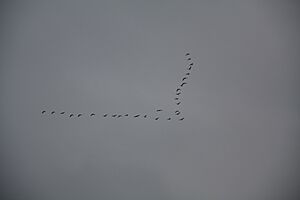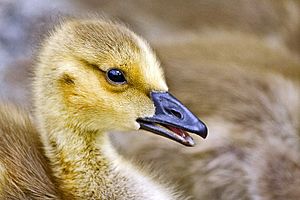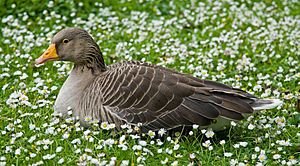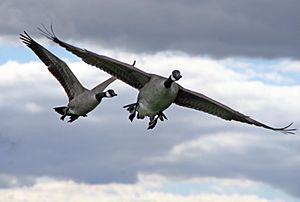Goose facts for kids
Quick facts for kids Goose |
|
|---|---|
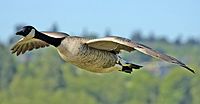 |
|
| Canada goose | |
| Scientific classification | |
| Kingdom: | |
| Phylum: | |
| Class: | |
| Order: | |
| Family: | |
| Subfamily: |
Anserinae
|
| Tribe: |
Anserini
|
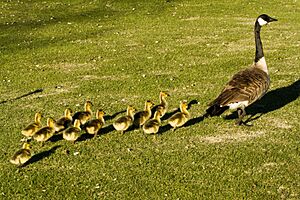
A goose (plural geese) is a type of large, long-necked bird. Geese belong to the Anatidae family. This family also includes swans, which are usually bigger than geese, and ducks, which are smaller with shorter necks.
Geese are very social birds. They often stay together in groups, both as young chicks and as adults. When the seasons change, geese migrate (travel long distances). They fly together in a V-shape during spring and fall.
A male goose is called a "gander". A baby goose is known as a "gosling". When you see a group of geese, it's called a "gaggle".
Types of Geese
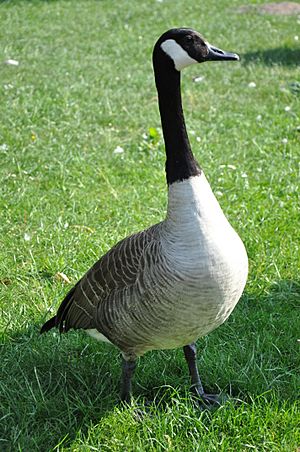
There are three main groups of geese alive today. These are often called "true geese":
- Grey geese (genus Anser): This group includes the greylag goose. Many domestic geese come from this type.
- White geese (genus Chen): These are often grouped with the grey geese.
- Black geese (genus Branta): A well-known example is the Canada goose.
Some other birds are also called "geese" but are not true geese. Most of these live in the Southern Hemisphere. They include birds like the Egyptian goose and the Cape Barren goose. The small "pygmy geese" are also not true geese.
Geese are monogamous, meaning they stay with one partner for their whole lives. They live in permanent pairs all year round. However, they only protect their territory during the short nesting season. Paired geese are stronger and find more food. This helps them have more healthy young.
Geese in Popular Culture
Geese are often mentioned in common sayings and stories:
- To "have a gander" means to take a quick look at something.
- "What's sauce for the goose is sauce for the gander" means that if something is fair for one person, it should be fair for another.
- Saying someone's "goose is cooked" means they are in big trouble or about to face a bad situation.
- Calling someone a "silly goose" is a friendly way to say they are acting a bit foolish.
- "Killing the goose that lays the golden eggs" comes from an old fable. It means destroying something valuable because of greed.
- A "wild goose chase" is a pointless search or effort that doesn't lead anywhere.
- There is a famous character named Mother Goose who is known for writing nursery rhymes for children.
Images for kids
-
A greylag goose (Anser anser).
-
Snow geese (Anser caerulescens) in Quebec, Canada
-
Barnacle geese (Branta leucopsis) in Naantali, Finland
See also
 In Spanish: Ganso para niños
In Spanish: Ganso para niños


